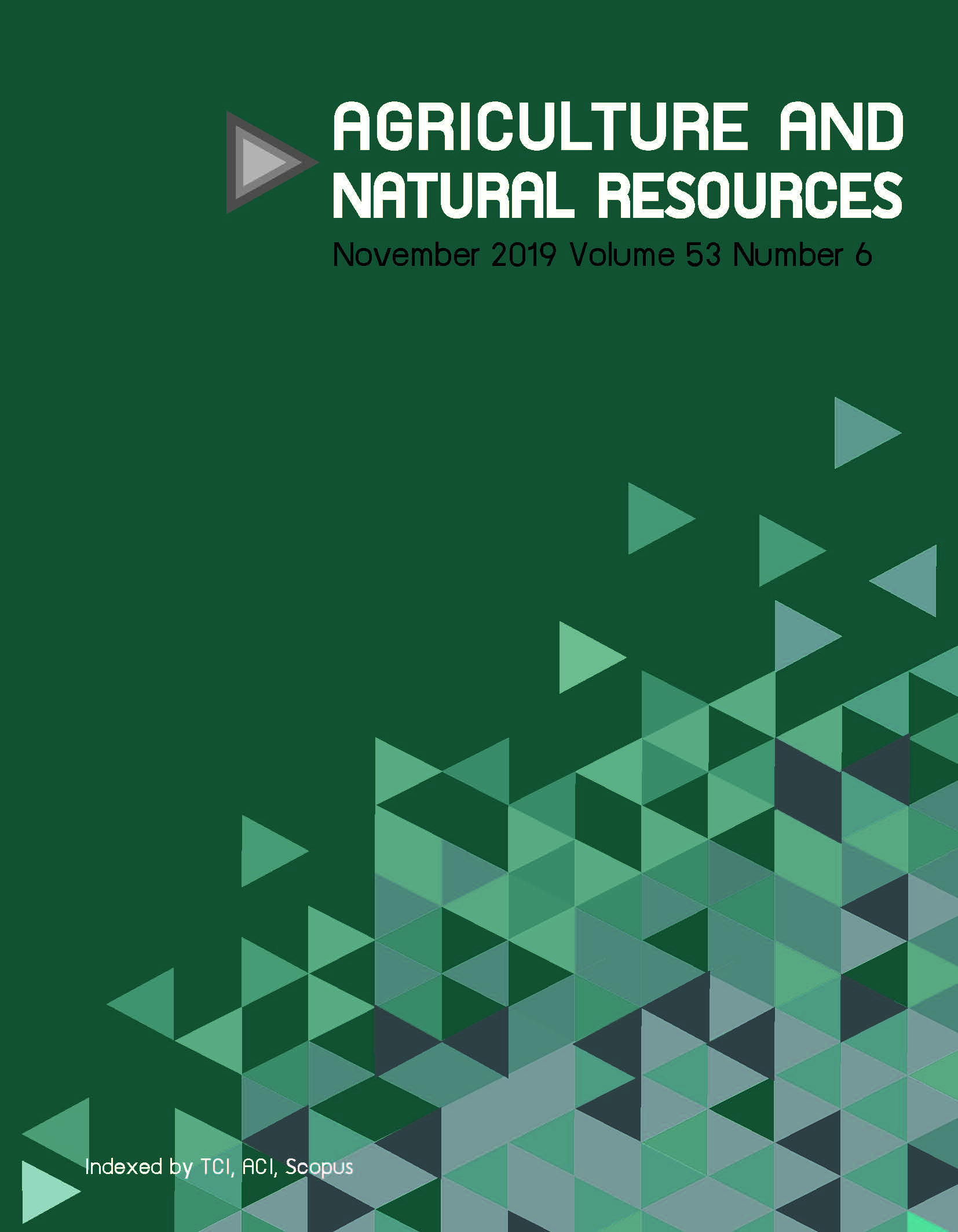Drought stress and Acacia seyal biochar effects on sorghum gas exchange and yield: A greenhouse experiment
คำสำคัญ:
Biochar,, Drought stress, Gas exchange, Sorghum, Water use efficiencyบทคัดย่อ
Drought is the controlling abiotic stress factor affecting crop production in dryland environments and exposes millions of people to food insecurity in Africa and Asia. Although sorghum is drought tolerant, it is not sufficiently known if biochar can reduce drought-related losses in yields in clay soils for this particular crop. The stomatal morphology and gas exchange responses were investigated of a sorghum cultivar, ‘Wad Ahmed’ (widely grown throughout Sudan and South Sudan), to drought stress and Acacia seyal biochar application in a greenhouse pot experiment. The experiment was set up in a split-plot, randomized block design with two experimental factors: drought stress (60%, 40%, 20% of field capacity) and biochar (no biochar and 10 Mg/ha). The potting soil was clay textured with 5% carbon content. There were eight replicate pots of each treatment which were arranged randomly in six blocks giving a total of 48 pots. The experiment lasted 153 d from sowing, with 127 d of drought treatment. The results showed that while drought stress had a significant (p < 0.05) effect on gas exchange, water use efficiency, biomass and grain yield, biochar had no significant effect, and neither drought stress nor biochar had a significant effect on stomatal size and density. It may be that high doses of biochar are required to benefit crops grown under drought stress, particularly when the soils have initially high soil organic carbon content, with more time needed for any effect to become evident.
Downloads
เผยแพร่แล้ว
How to Cite
ฉบับ
บท
License
Copyright (c) 2019 Kasetsart University

This work is licensed under a Creative Commons Attribution-NonCommercial-NoDerivatives 4.0 International License.
online 2452-316X print 2468-1458/Copyright © 2022. This is an open access article under the CC BY-NC-ND license (http://creativecommons.org/licenses/by-nc-nd/4.0/),
production and hosting by Kasetsart University of Research and Development Institute on behalf of Kasetsart University.





